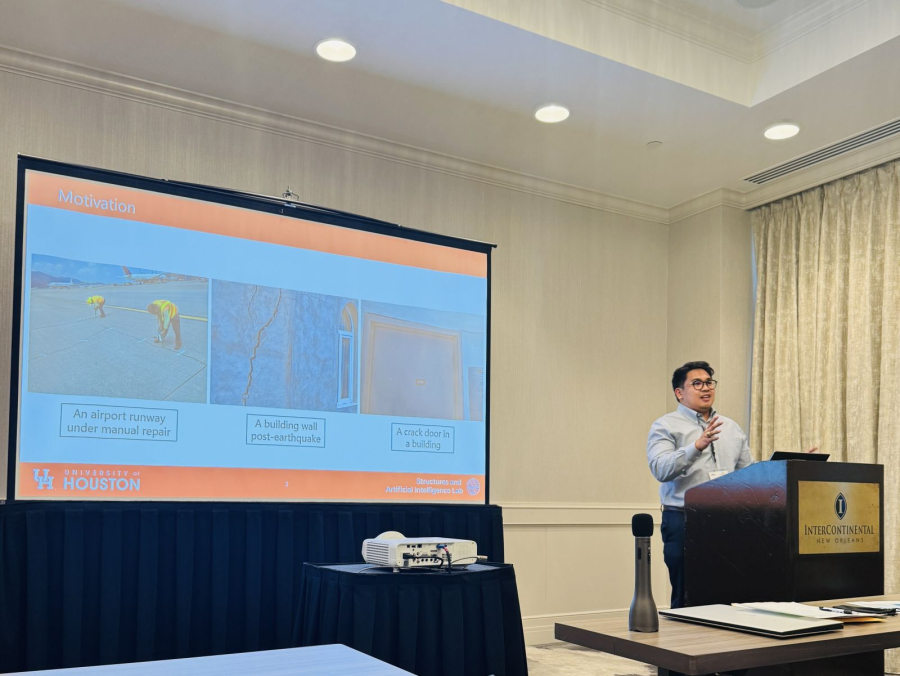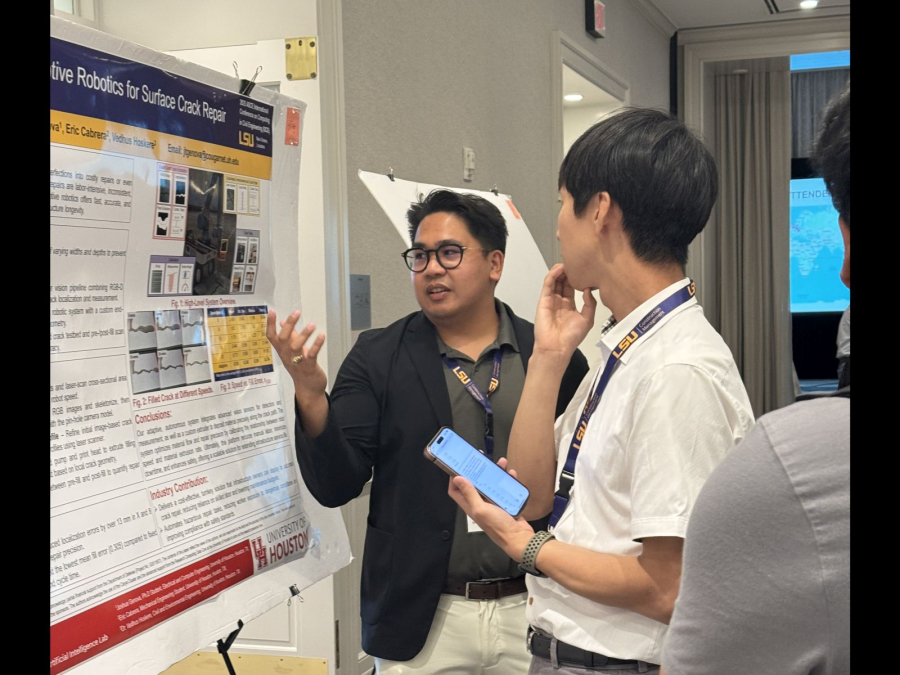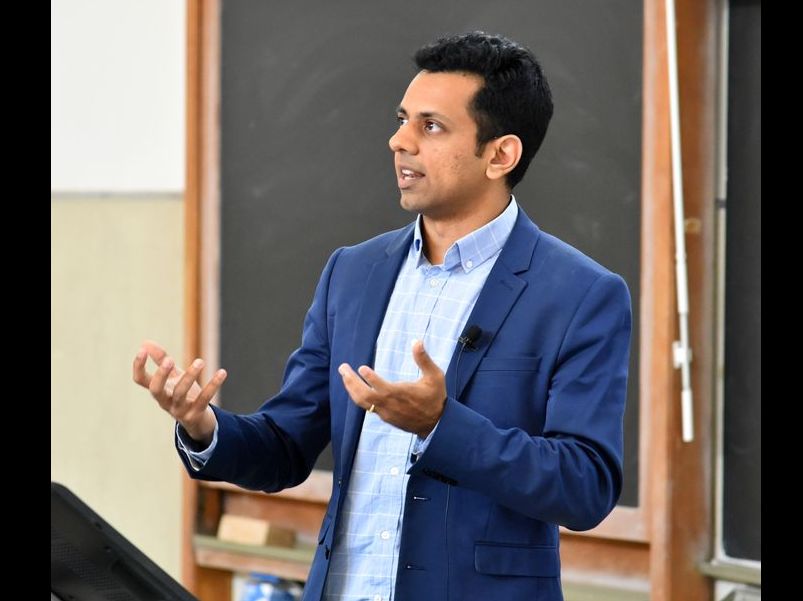An interdisciplinary team from the Cullen College of Engineering was awarded the Runner-Up Best Paper Award at the 2025 ASCE International Conference on Computing in Civil Engineering (i3CE 2025), held in New Orleans in May.
Their paper, “Vision-Based Adaptive Robotics for Autonomous Surface Crack Repair,” was selected from 237 accepted submissions, placing it in the top 0.8 percent of accepted papers.
The team includes Joshua Genova, a Ph.D. student in Electrical Engineering; Eric Cabrera, a senior in Mechanical and Aerospace Engineering; and Vedhus Hoskere, an Assistant Professor in Civil and Environmental Engineering and with a joint appointment in Electrical and Computer Engineering.
Hoskere said the collaboration came about because of his research area, and due to the efforts of the students and their stellar work first in classroom settings.
“Joshua approached me during his MS with an interest in doing research on robotics in the built environment, which is one of the topics my group works on and he then continued for a Ph.D. in my lab,” Hoskere said. “Eric was a top student in my statics class and was interested in research, so he applied for the Provosts Undergraduate Research Scholarship and was successful. After completing the program, he has continued as a research assistant in my lab since that time.”
Their collaborative research tackles the widespread challenge of repairing ageing infrastructure. Specifically, their work targets automatically repairing cracks — defects that if not promptly repaired, can lead to accelerated deterioration and costly structural damage.
The team is the first to develop a fully autonomous robotic system that combines artificial intelligence with precision robotics to detect and repair these surface cracks. Traditional repair methods often rely on manual inspection and patching, which are labor-intensive, time-consuming, and difficult to scale.
In contrast, the UH team’s approach uses an RGB-D camera to detect cracks, a laser scanner for precise depth and width measurements, and a robotic manipulator equipped with a material extruder for targeted repair.
A key innovation of the system lies in its adaptability. Unlike conventional fixed-speed repair methods, the robot dynamically adjusts material flow and toolpath based on real-time crack geometry, improving repair quality and minimizing material waste. The researchers also introduced a novel validation framework using 3D-printed specimens that replicate real-world surface crack conditions, ensuring that experimental tests are both repeatable and practically relevant.
This work contributes to ongoing advancements in the integration of robotics and sensing technologies for autonomous infrastructure maintenance. By reducing the need for manual labor, increasing safety, and improving the precision of repair operations, the system represents a promising step toward scalable, real-world deployment.
Both Genova and Cabrera expressed gratitude toward Hoskere, and indicated that they’d like to continue working in this field of research.
“My journey has been shaped by the unwavering guidance of my PI, Dr. Hoskere, whose insight and patience have illuminated the path,” Genova said. “I’m grateful for my lab mates, whose infectious enthusiasm and unwavering support lift me up on even the toughest days. My family’s faith in me has been the steady foundation beneath every step. And finally, my partner, Sheidel, whose kindness and patience inspire me to be my very best.”
Cabrera grew up in the Houston area, which was a key component to continuing his education at UH.
“I chose UH because it’s a welcoming, ambitious community right here in my hometown. Staying in Houston lets me keep close to my family while diving into hands-on research,” he said.
“The mechanical engineering program here is flexible, so I could mix related courses to build the exact skill set I needed for this project. Houston itself is incredibly diverse, and I’ve met peers from all over the world, each bringing unique perspectives that have really broadened my thinking. And as one of the country’s top engineering hubs, Houston offers endless opportunities to connect with industry, explore internships and see the real-world impact of my work.”
The research is funded by the University of Houston’s Subsea Systems Institute Center of Excellence, which supports innovative engineering solutions with applications in infrastructure and energy systems. The award highlights the value of cross-disciplinary collaboration at the Cullen College of Engineering and affirms the growing role of robotics and AI in reshaping the future of civil infrastructure.


